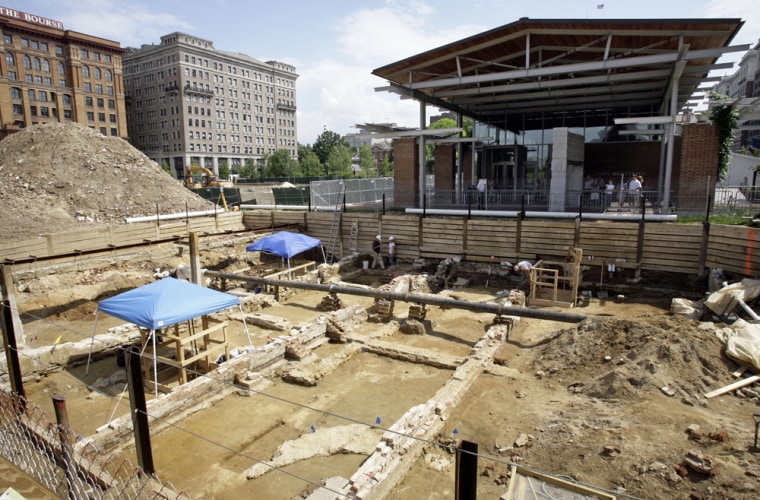History and tourism leaders from across Pennsylvania have launched an underground railroad campaign connecting more than 20 historic sites and highlighting the state's role, both positive and negative, in the history of slavery.
Speakers praised the "Quest for Freedom" program as they stood next to an original copy of the Emancipation Proclamation at the National Constitution Center, a museum about the U.S. Constitution.
Mayor John F. Street hoped the new exhibits would stress black history by prominently mapping critical underground railroad stops, including those at churches across the state. Its focus on both slavery and the anti-slavery movement would show "both the problems and the promise of this great country," Street said.
"Too many people have not focused on the fact that this paradox has existed," he added.
Organizations participating in the program include The African-American Museum in Philadelphia, the Pennsylvania Tourism Office, the National Civil War Museum and Gettysburg National Military Park.
The program was announced on June 19, also known as "Juneteenth," the day in 1865 when Union soldiers landed at Galveston, Texas, to announce the war was over and that slaves were free. That was more than two years after Abraham Lincoln signed the Emancipation Proclamation.
"No single document has done more," said Joe Torsella, president of the National Constitution Center. "It moved our nation a giant step forward on the road we are still continuing on."
The "Quest for Freedom" program was launched earlier this summer, shortly after archaeologists uncovered an underground passageway used by George Washington's nine slaves while he lived in Philadelphia. The finding was part of an excavation at the site of the President's House, where Washington and John Adams served their presidential terms. The discovery, among others, made community leaders re-evaluate how they should display the slaves' history at a new exhibit about the home.
On July 3, a mock funeral was held for the nine slaves, said Cheryl LaRoche, an archaeologist at site.
"When we think about liberty and justice for all ... we hope to move it from rhetoric to reality," LaRoche said.
The new tourism campaign will include special exhibits, historical re-enactments and walking and bus tours. Regional tourism offices started offering travel packages and programs that they plan to run until Labor Day. Six heritage trails show the history of the underground railroad in Pennsylvania.
"Our foundation, our grounding, is the underground railroad," said Lenwood Sloan, the state's director of cultural and heritage tourism. "Its four walls are resistance, flight, social change and enterprise. Its roof is education, and its spire, self-empowerment."
Quest for Freedom sites in Philadelphia include many well-known historic attractions like the Liberty Bell, which became an icon for abolitionists; the National Constitution Center, which houses exhibits on constitutional amendments and legal precedents related to slavery and abolition, and Independence Hall, where the Slave Trade Act was passed, banning U.S. vessels from engaging in slave trade.
Another important site on the tour of Philadelphia is Mother Bethel African Methodist Episcopal Church, which was founded by Richard Allen, who was born a slave but bought his freedom and is considered the founder of the AME denomination. Interesting but lesser-known historic sites include the Johnson House and Belmont Mansion, both in Philadelphia, where escaping slaves were hidden on the Underground Railroad.
The Quest for Freedom routes also include places in Lancaster, Columbia, York, Gettysburg, Philadelphia and Montgomery counties such as the Mason-Dixon Line, a few miles south of Gettysburg on I-83 in Shrewsbury. Thousands of fugitive slaves were ushered across the line, which marked the border between North and South. The Bethel African Methodist Episcopal Church in Lancaster stages performances through December of "Living the Experience," described as a reenactment of the Underground Railroad.
